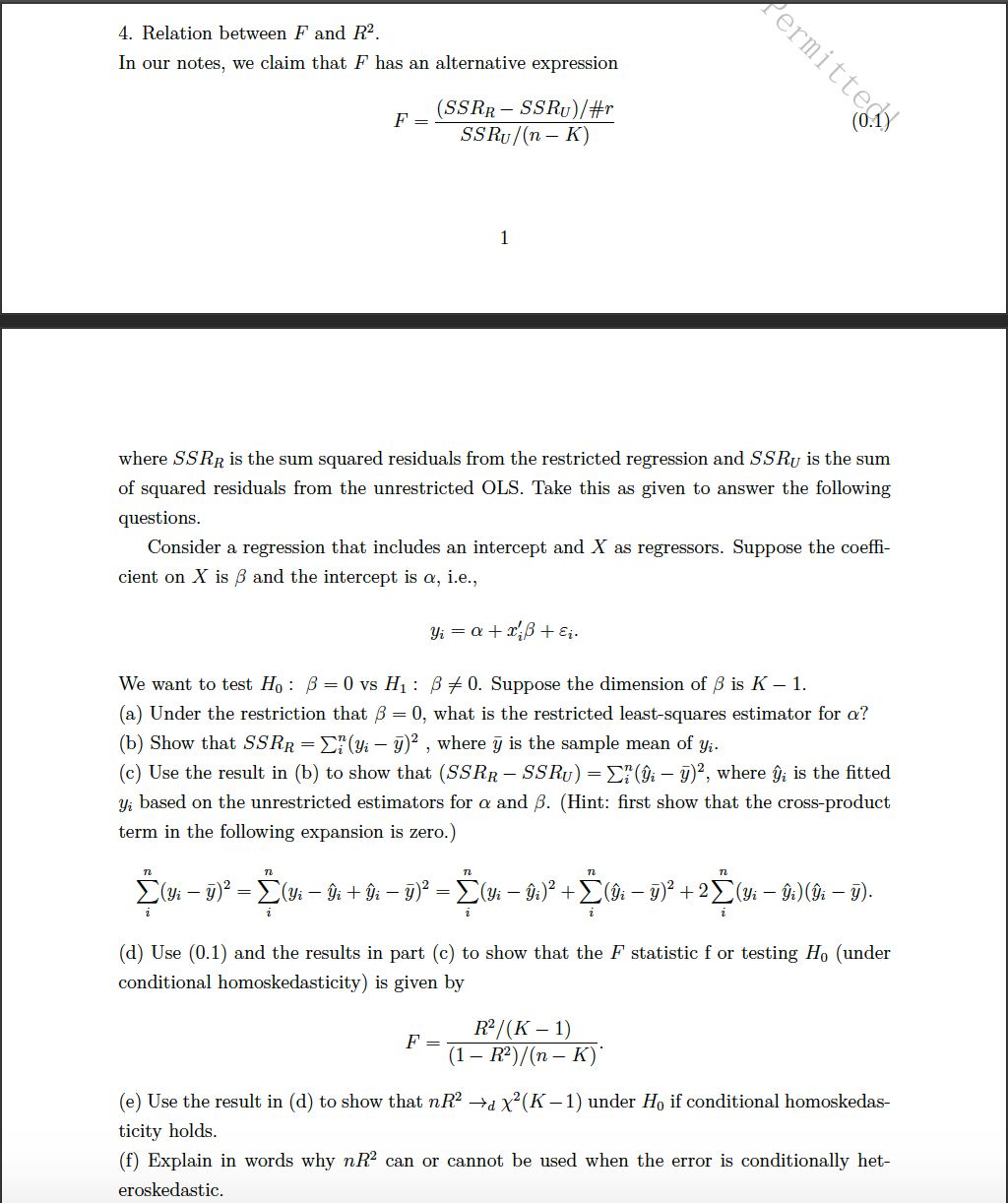4. Relation between F and R. In our notes, we claim that F has an alternative expression (SSRR - SSRU)/#r F SSRU/(n - K)

4. Relation between F and R. In our notes, we claim that F has an alternative expression (SSRR - SSRU)/#r F SSRU/(n - K) 1 ermitted where SSRR is the sum squared residuals from the restricted regression and SSRU is the sum of squared residuals from the unrestricted OLS. Take this as given to answer the following questions. Consider a regression that includes an intercept and X as regressors. Suppose the coeffi- cient on X is and the intercept is a, i.e., Yi = a + xi + . We want to test Ho: 8-0 vs H: 8+0. Suppose the dimension of is K - 1. (a) Under the restriction that = 0, what is the restricted least-squares estimator for a? (b) Show that SSRR - ( ), where i is the sample mean of y;. - (c) Use the result in (b) to show that (SSRR - SSRU) (i ), where ; is the fitted y; based on the unrestricted estimators for a and B. (Hint: first show that the cross-product term in the following expansion is zero.) n n n n n (Yi ) = (Yi i + i ) = (Yi ) + (i ) + 2(Yi 9i) (i ). - 2 i - (d) Use (0.1) and the results in part (c) to show that the F statistic for testing Ho (under conditional homoskedasticity) is given by R/(K-1) F (1 - R)/(n - K) (e) Use the result in (d) to show that nR d x(K 1) under Ho if conditional homoskedas- ticity holds. (f) Explain in words why nR can or cannot be used when the error is conditionally het- eroskedastic.
Step by Step Solution
There are 3 Steps involved in it
Step: 1

Get step-by-step solutions from verified subject matter experts
100% Satisfaction Guaranteed-or Get a Refund!
Step: 2Unlock detailed examples and clear explanations to master concepts

Step: 3Unlock to practice, ask and learn with real-world examples

See step-by-step solutions with expert insights and AI powered tools for academic success
-
 Access 30 Million+ textbook solutions.
Access 30 Million+ textbook solutions.
-
 Ask unlimited questions from AI Tutors.
Ask unlimited questions from AI Tutors.
-
 Order free textbooks.
Order free textbooks.
-
 100% Satisfaction Guaranteed-or Get a Refund!
100% Satisfaction Guaranteed-or Get a Refund!
Claim Your Hoodie Now!

Study Smart with AI Flashcards
Access a vast library of flashcards, create your own, and experience a game-changing transformation in how you learn and retain knowledge
Explore Flashcards





